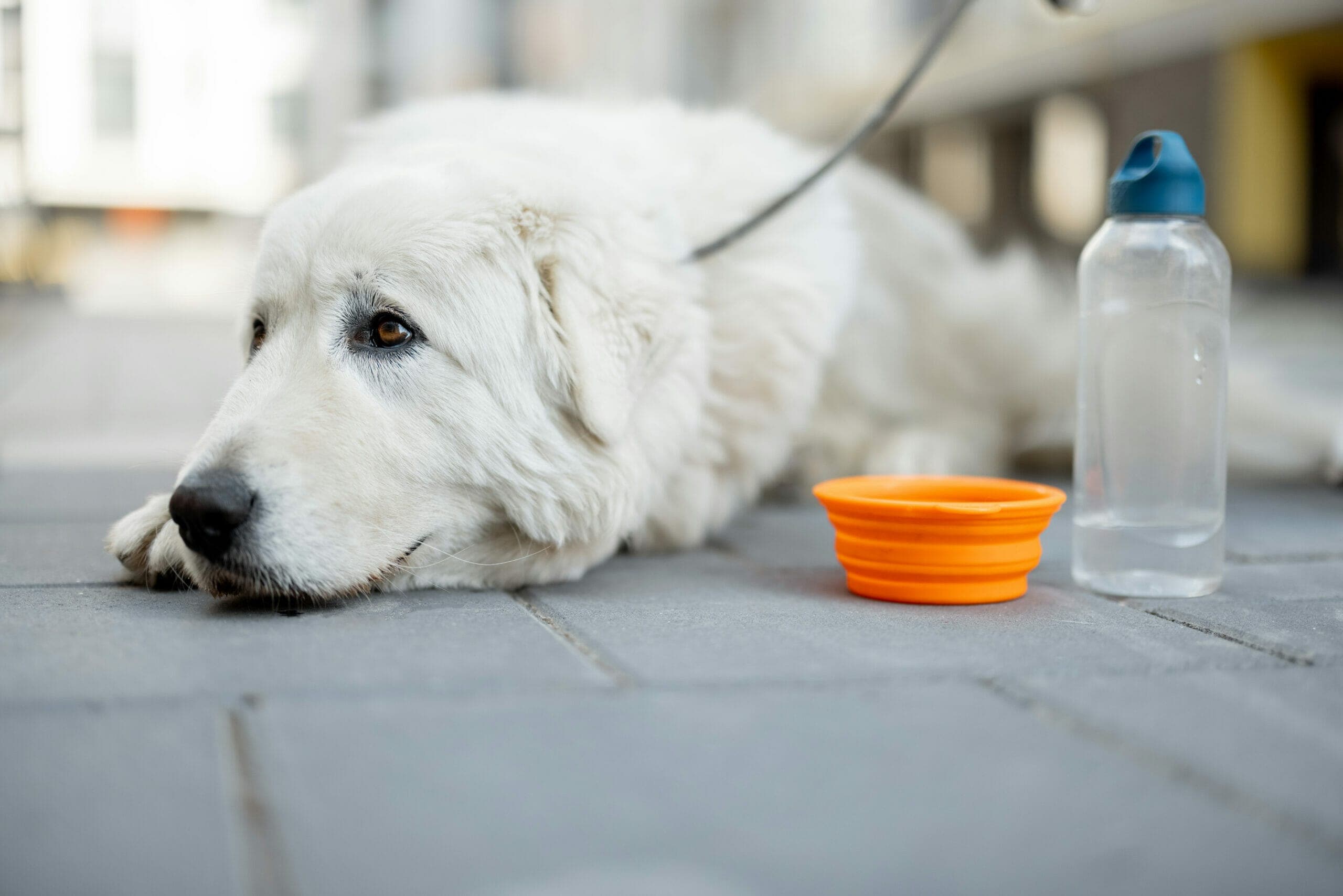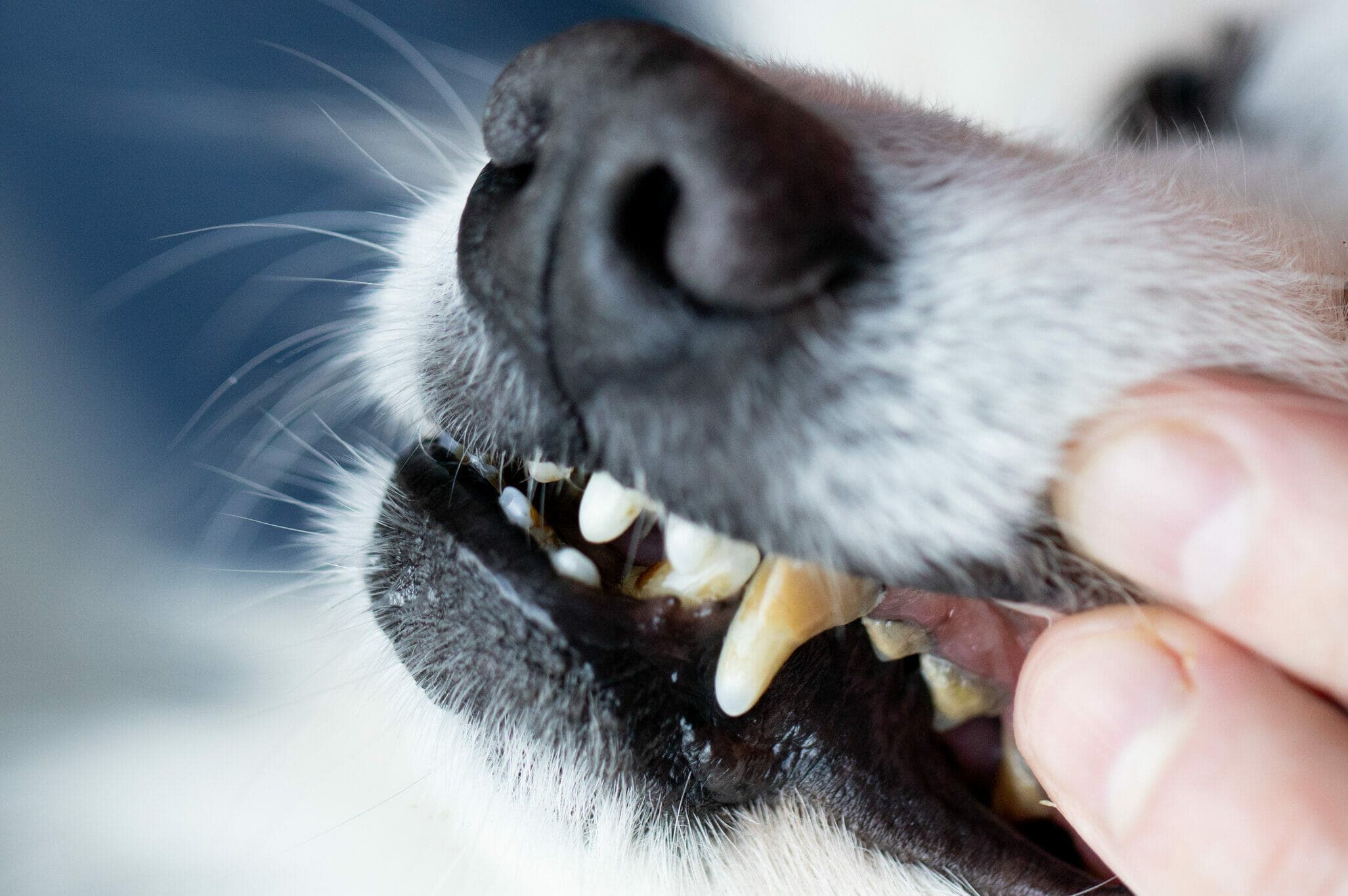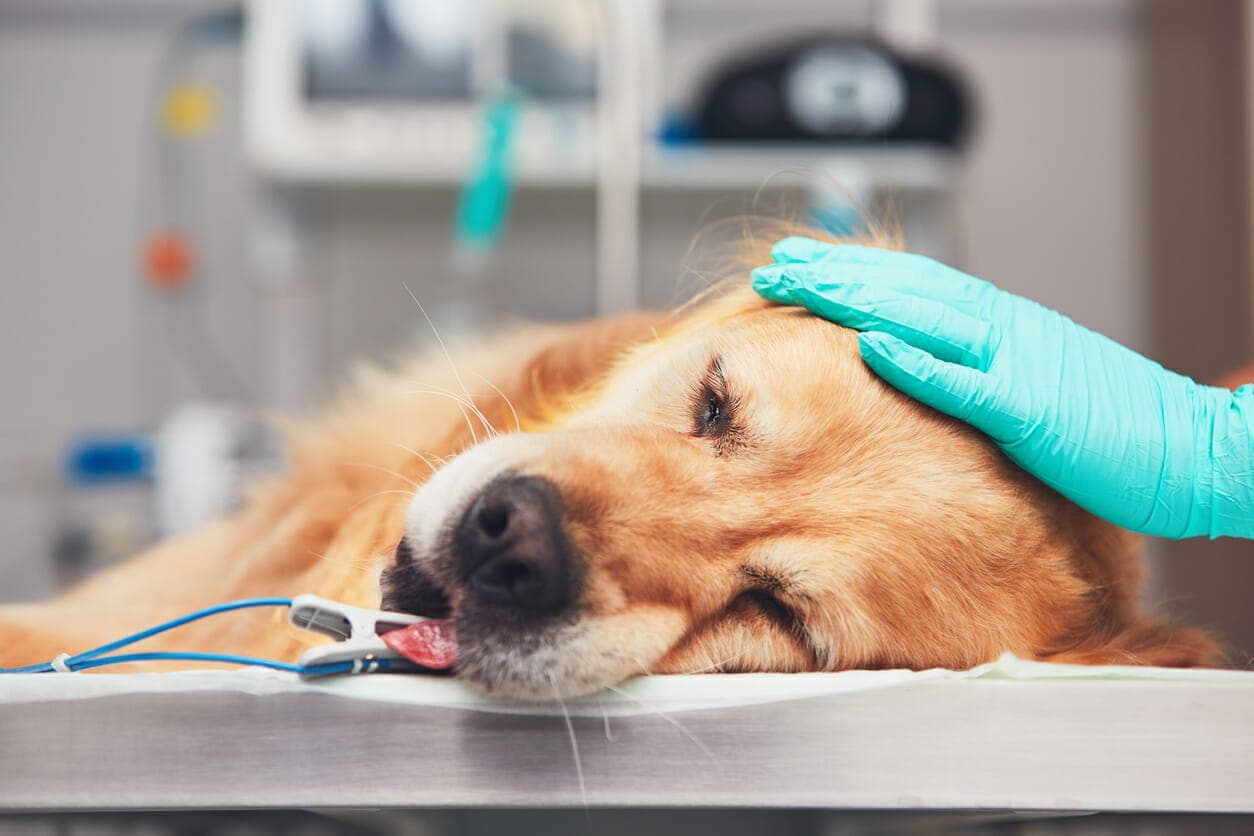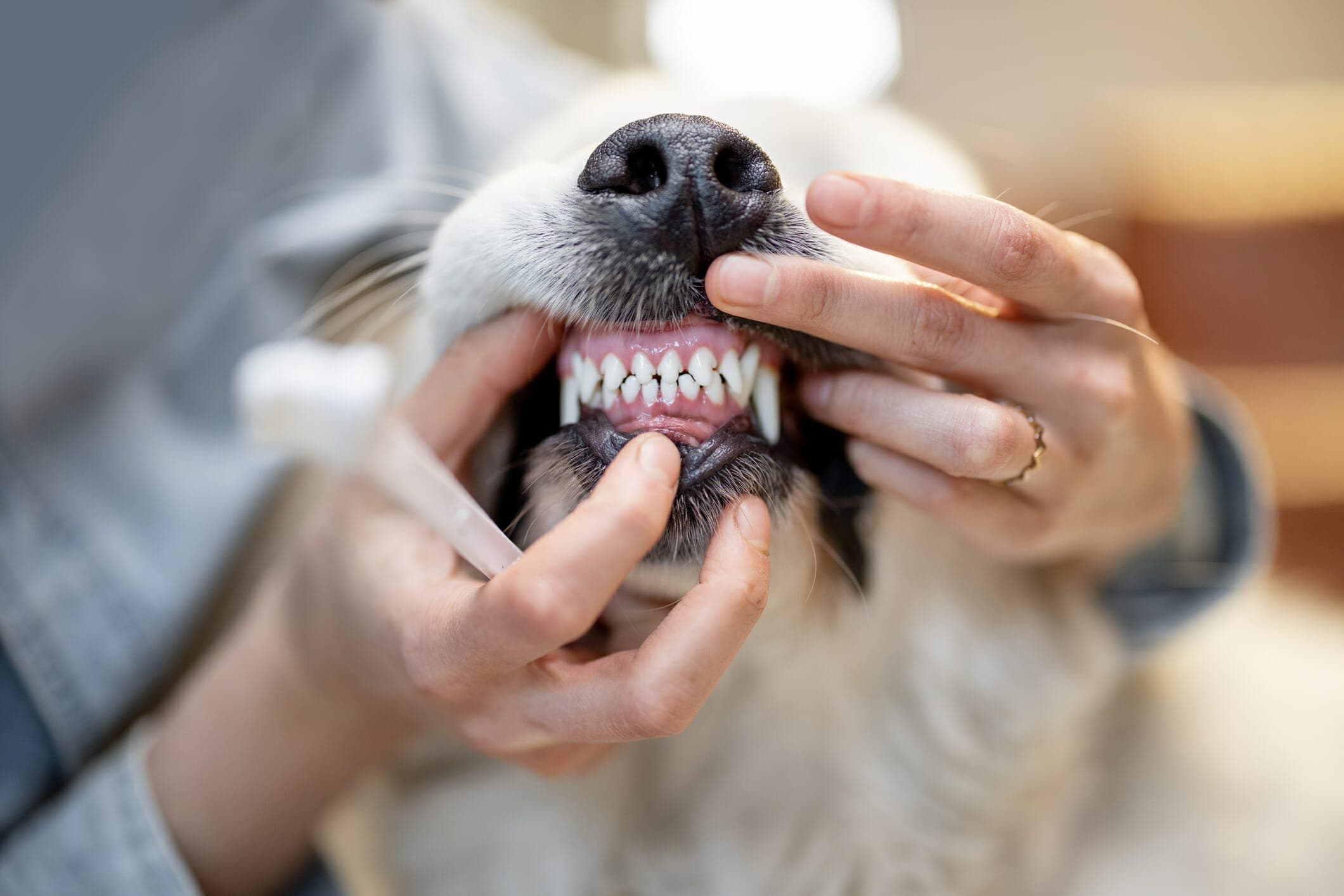
Do dogs have dental problems as humans do? Sadly, yes. They, too, require regular dental work to prevent them. Your pup can suffer from periodontal and gum diseases without proper care.
Why do dogs gums bleed when brushing? It usually indicates poor dental hygiene, but it can also be symptom of more serious health issues. So, it’s important to take the matter seriously and see if there’s anything we can do.
Let’s look into the most common reasons your dog’s gums bleed when brushing.
Bleeding Gums Can Signify Gum Disease
If your furry friend develops problems like tartar buildup, gingivitis (gum inflammation), and bleeding gums, you should look closer into the root cause. Bleeding gums are typically a symptom of gum disease.
The No.1 cause of dogs’ bleeding gums is probably poor oral hygiene. Many dog parents, even those who immensely care about their dog’s health, sometimes fail to maintain proper oral hygiene for their dogs.
The result is a tartar and plague buildup near the gum line and around the teeth. Without treatment, it can lead to inflamed gums and other health problems.
One of the first symptoms of dental disease is gingivitis. It is the only periodontal disease stage that can be reversed. So, your dog should visit the vet before the problem gets bigger and irreversible.
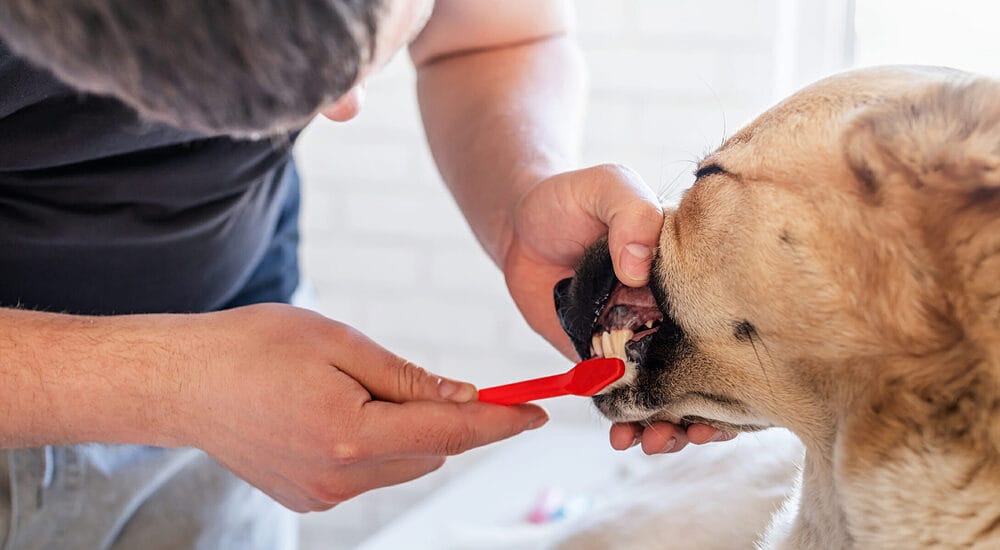
Stomatitis Can Also Cause The Gums To Bleed
Stomatitis is a condition where painful sores and swelling develop inside the mouth. It can occur in both humans and dogs.
Unlike gingivitis, stomatitis affects the mouth’s mucous membranes and inflames them in a more generalized manner. It usually happens in the roof or floor of the mouth, lips’ inner surfaces, and the tongue, not just in the gums.
The cause of stomatitis is still unclear, but scientists believe your dog can suffer from it when its immune system overreacts to the bacterial biofilm in the gums. Stomatitis can be very painful.
Since stomatitis inflames the mouth tissues, your dog might lose its appetite. You might also see that it has stopped grooming itself and have an unkempt coat because using its mouth is painful.
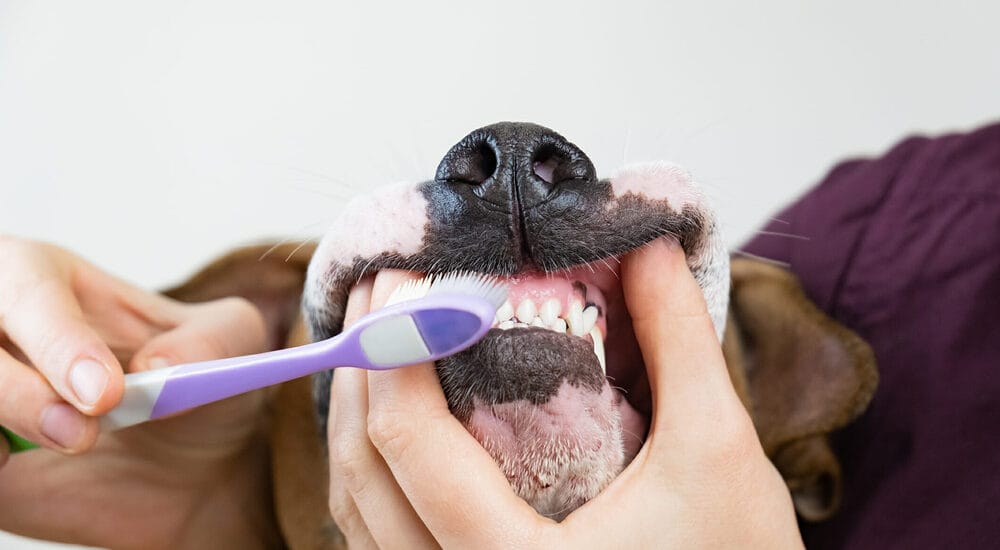
Bleeding Gums and Periodontal Disease
Leaving stomatitis and gingivitis untreated can lead to more severe problems like periodontal disease. It is a progressive disease caused by the excess buildup of plague bacteria in the dog’s mouth.
Besides poor hygiene, periodontal disease can also develop for other reasons. Malocclusion (bad bite), genetics, and your dog’s poor mouth shape are some of them.
Brachycephalic dog breeds (those with short snouts) like the bulldog, pug, and Shih Tzu are prone to this disease because of their mouth and oral cavity shape.
If you have a pup that belongs to such breeds, bleeding gums during brushing shouldn’t be surprising. However, you’d want to get that checked to avoid bigger dental problems.

Oral Lacerations
Your dog’s mouth might bleed because of reasons other than gum disease. Oral trauma is common in dogs, especially pups that chew on anything and everything out of curiosity as they grow old.
Besides noticing blood on the toothbrush, you might also notice spots on the saliva, oral cavity, and chew toys.
Puppies do not have thumbs as human babies do. So they experience the world using their mouths. They are curious creatures that love to chew on things, which can be annoying most times. But as a parent, you’d want to keep sharp and precious objects out of their reach.
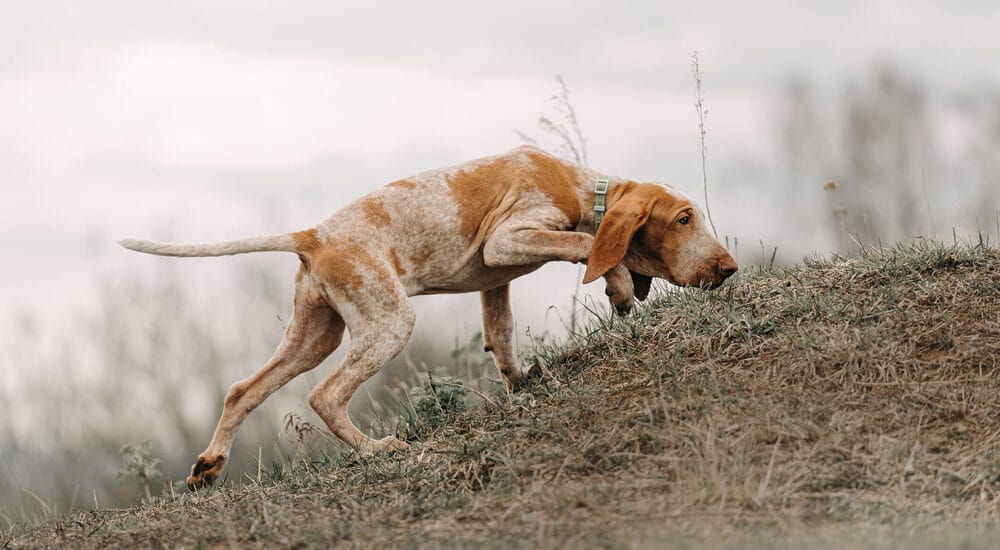
Because of their chewing nature, it is common for dogs to get oral lacerations more often than we think. We can only make sure that they don’t find anything sharp and dangerous during the process, or else it may require immediate medical attention.
The tissues in the oral cavity bleed profusely when cut or punctured. Therefore, even a small laceration can lead to major blood loss.
If you see your pup’s mouth covered in blood when it’s time for brushing, you might want to avoid the routine and take it to the vet as soon as possible. Unfortunately, there’s nothing much we can do under such circumstances than to wipe the blood.
Don’t force open their mouth or manipulate the laceration in any way, as it might cause more severe injuries.
Bleeding Gums Symptoms In Dogs
It can start subtly, and you might not notice your dog’s gum problems immediately. However, if you’ve noticed some blood on the toothbrush while doing your nighttime cleaning routine, you might want to check for other symptoms, too.
Look for the following symptoms if you think your dog has bleeding gums:
Bad Breath (Halitosis)- It is one of the earliest and the most noticeable symptoms that indicate bleeding gums
- Visible blood on surfaces, toys, and in the drool
- Suppressed appetite
- Dark pink or red swollen gums
- Difficulty eating dry kibble or chewing on toys/bones
- Brown or yellow teeth
- Loose or missing teeth
- Weight loss
Different Causes Of Dog’s Bleeding Gums
Besides gum diseases, short-term problems can also cause bleeding gums in dogs. Find out whether any of the following happened to your dog recently, causing its gums to bleed when brushing.
- Foreign object penetration- It can include parts of objects chewed on by your pup out of curiosity.
- A systemic disease causing inflammation of the gums
- Injury or trauma to the oral area
- Inflammation and infection due to poor oral hygiene
- Consumption or ingestion of toxins
Diagnosing Bleeding Gums In Your Dog
As any concerned parent, you’d want to check your dog’s mouth as soon as you see blood coming out of it. If you take it to the vet, it might go through an x-ray, MRI, or CT scan for a thorough examination.
You can expect these steps while diagnosing your dog’s gums:
- You’ll need to provide a complete record of your dog’s oral hygiene steps, dietary regimen, vaccination, and health history. The vet will also ask you about the first time you noticed the bleeding gum symptoms, their duration, frequency, and so on.
- Your dog will undergo a physical exam, which might include some blood tests to determine its blood component and if there is any fungal or bacterial infection.
- The vet will take a sample for biopsy if there are any masses. He might also take urine, fecal, and tissue samples for testing.
Note that the vet might perform an extensive diagnosis only if he suspects an underlying health issue is causing problems in the oral area. The treatment will depend on the results.
One Reason Why Bleeding Gums Shouldn’t Concern You
Sure, bleeding gums can be alarming at first, especially when you’re meticulously ensuring your pup lives its best life every day.
However, it may not be a matter of concern if your pup is twelve to sixteen weeks old. It is very typical for puppies to have bleeding gums when they are growing adult teeth.
Just like humans, puppies replace their “baby teeth” or deciduous teeth when they’re growing with stronger, adult teeth.
Loss of baby teeth starts when the pup is around three to four months old, and most owners don’t even see it happening! Most often, a puppy tooth falls out, and the puppy swallows it (which isn’t dangerous).
This process often involves blood. So, if you have a young pup at home and notice some blood on its chew toys or a bone, you might not have anything to worry about.
Unless you’ve noticed other health issues in the dog, you don’t need to visit the bet. However, if you want to ENSURE that nothing is wrong with your furry little friend, your vet will be more than happy to give it a look.

Should You Stop Brushing Your Dog’s Bleeding Gums?
Your vet will be the best entity to answer that question, as it depends on the severity of the problem and other factors.
If the bleeding isn’t too severe, gently use a soft toothbrush to continue brushing your dog’s teeth (3x a week).
Dental chew toys, dental wipes, and oral rinses are great alternatives to decrease gingivitis and plaque buildup if brushing is too abrasive. It is best for puppies and older dogs.
Brushing is the best way to prevent plagues and periodontal diseases in dogs. Bleeding gums is sometimes common and not a sign of disease as the gum area is quite sensitive.

How To Prevent Bleeding Gums In Dogs?
There’s only one answer to this- Proper Oral Hygiene. As long as you ensure that your dog has a clean mouth, dental problems will be at bay.
You can start brushing your pup’s teeth once they reach six months of age. They will have their adult teeth by this time. You will also have an easier time getting your pup used to tooth brushing if you start it at an early age.
Besides toothbrushes, various other dental products on the market can help you keep your dog’s oral health in optimal condition.
Final Thoughts
Dental health is as essential as every other body part in dogs. Therefore, it is vital to maintain good oral hygiene regularly.
If you just noticed bleeding gums in your dog while brushing its teeth, you’d also want to look for other symptoms. Visiting the vet is the best option to ensure quick diagnosis and recovery.
